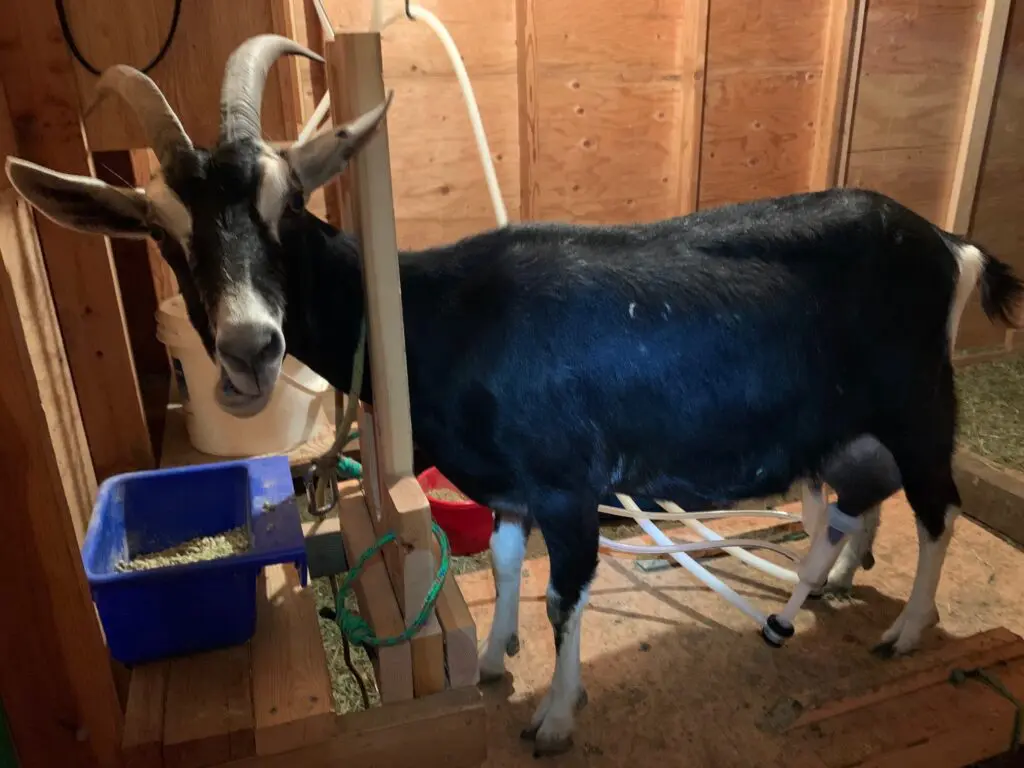--- Blog, Backyard goats, Pasture Life
Milk Goat Health and Wellness
Milk Goat Health and Wellness
 Nutrition health and wellness is a life long commitment when raising milk goats. As your goats grow, keeping them healthy is crucial. Finding a vet that has goat experience or a local dairy farmer who knows more than you do. In the A-Z milk goats course, we will be going over everything you need to know about milking a goat for personal consumption and maybe even selling some milk in a small operation. By investing in this course, we give you all the guidance, help, and well-informed videos to keep your success with healthy goats. For example, the course will help you prevent, treat, and be knowledgeable about common goat diseases and the overall health of your goats. We will be covering the process of milking goats from beginning to end. You will have all the information you will need to milk like a pro. Therefore, we at packgoats.com and Cristen Sullivan, owner of the Simple Pulse Milking Machine, have spent hundreds of hours, pulling from decades of experience to accumulate this “how-to” in one place.
Nutrition health and wellness is a life long commitment when raising milk goats. As your goats grow, keeping them healthy is crucial. Finding a vet that has goat experience or a local dairy farmer who knows more than you do. In the A-Z milk goats course, we will be going over everything you need to know about milking a goat for personal consumption and maybe even selling some milk in a small operation. By investing in this course, we give you all the guidance, help, and well-informed videos to keep your success with healthy goats. For example, the course will help you prevent, treat, and be knowledgeable about common goat diseases and the overall health of your goats. We will be covering the process of milking goats from beginning to end. You will have all the information you will need to milk like a pro. Therefore, we at packgoats.com and Cristen Sullivan, owner of the Simple Pulse Milking Machine, have spent hundreds of hours, pulling from decades of experience to accumulate this “how-to” in one place.
Disclaimer: We are not veterinarians; however, we have a lot of experience in raising goats.
Parasites are one of the top four killers of goats.
- Worms: Approximately 85% of goat health problems are due to worms. Symptoms of worms include diarrhea, sluggishness, a drop in milk production, and loss of appetite. One way to check for worms is to collect a stool sample from the goat and send it to your vet but a really quick way to check is to pull the eyelid out to check if it is salmon pink in color. Salmon pink color is good but if it is a pale pink or white color, the goat most likely has worms. So goats need wormed, given probiotics, and iron supplements.
- Coccidia: All goats harbor coccidia. In times of stress, coccidia can become worse. Adult goats shed coccidia in feces and contaminate the environment. As it builds up in the environment, baby goat kids born later can die. A symptom of coccidia is diarrhea. It is important to have a separate pen for goat kids the same age and practice good herd management.
- Caprine Arthritis and Encephalitis (CAE): CAE is a contagious viral infection of goats. It is spread via contact through body secretions including blood and feces which can be passed from a doe to her kid.
- Caseous Lymphadenitis (CL): CL is a chronic infection caused by Corynebacterium pseudotuberculosis bacteria. Very contagious disease and is best known for abscesses in the external lymph nodes of the neck and abdomen.
Milk Goat Common Problems
- Ketosis: Ketosis is a result of improper nutrition and inadequate protein in the pregnancy stage. Treatment by oral administration of molasses, Karo syrup, or propylene glycol. The dosage is dependent on weight. During gestation being properly fed for the prevention of ketosis.
- Milk Fever: Milk fever is low calcium in the blood. Feed alfalfa higher in calcium for prevention. A doe with milk fever will show symptoms of lethargy, loss of appetite, and poor milk production. By treating, administer calcium gluconate directly into the bloodstream.
- Mastitis: This is an infection of the udder and prevents quality milk. To treat mastitis, you can milk out the infected udder and infuse the teat with an intramammary medication for 2-5 days and use fever-reducing medication.
The health and wellness of your milk goats will lead to a successful milking process. If you liked this article and found it helpful, check out the how-to raise a baby goat course for more resources and tips to grow healthy, happy goats. Learn the necessary skills to care for a baby goat in its first year. Be sure to check out Youtube packgoats.com for everything goats. Our mission is to become a leading resource on all things for owning your goats. In addition, help you feel confident about the information and be successful in raising your goats.


